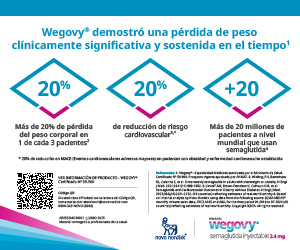Management of glycemia monitoring: objectives of treatment and methods. Glycosilated hemoglobin A1C (HbA1C). Fructosamine. Self-blood glucose monitoring. Glycosuria. Ketonuria
DOI:
https://doi.org/10.47196/diab.v51i3.104Keywords:
objectives of control, metabolic control, glycosylated hemoglobin a1c, self-blood glucose monitoringAbstract
The standard measurement of control and follow-up in patients with diabetes, the glycosylated hemoglobin (HbA1C), present difficulties in renal insufficiency, in which it may not be a good indicator of glycemia monitoring. Fructosamine is not valid when albumin is less than 3 mg/dl, whereas glucosuria and cetonuria are not effective measurement tools in the kidney disease. The individualized self-monitoring of blood glucose (SMBG) is a useful method in all kidney stages and of greater value in the control and follow-up in advanced renal insufficiency, and alternative kidney treatments.
References
National Kidney Foundation. KDOQI. Clinical practice guidelines and clinical practice recommendations for diabetes and chronic kidney disease. A clinical update from KDIGO Kidney 2015; 87(1): 20-30
Akbari A, Clase CM, Acott P, et al. Canadian Society of Nephrology Commentary the KDIGO. Clinical practice guideline for CKD evaluation and management. Am J Kidney Dis. 2015; 65(2): 177-205.
Rohlfing CL, Wiedmeyer HM, Little RR, et al. Defining the relationship between plasma glucose and HbA(1c): analysis of glucose profiles and HbA(1c) in the Dia- betes Control and Complications Trial. Diabetes Care. 2002; 25(2):275-278.
Stratton IM, Adler AI, Neil HA, et al. Association of glycaemia with macrovascular and microvascular com- plications of type 2 diabetes (UKPDS 35): prospective observational study. BMJ. 2000; 321(7258):405-412.
American Diabetes Association. Standards of Medical Care. Diabetes Care 2017; 40 (Suppl 1): S48-S56
American Diabetes Association. Standards of Medical Care. Diabetes Care 2012; 35 (Suppl 1):S11-S63.
Munshi MN, Segal AR, Suhl E, et al. Frequent hypo- glycemia among elderly patients with poor glycemic control. Arch Intern Med 2011; 171(4):362-364.
Shurraw S, Hemmelgarn B, Lin M, et al. Association between glycemic control and adverse outcomes in people with diabetes mellitus and chronic kidney di- sease: a population based cohort study. Arch Intern Med 2011; 171: 1920-1927-
Ramirez SPB, McCullough KP, Thumma JR, et al. He- moglobin A1c levels and mortality in the diabetic he- modialysis population: finding from Dialysis Outco- mes and Practice Patterns Study (DOPPS) Diabetes Care 2012: 35:2527-2532.
Duong U, Mehrotra R, Molnar MZ, et al. Glycemic con- trol and survival in peritoneal dialysis patients with dia- betes mellitus. Clin J A Nephrol 2011; 6(5) :1041-1048.
Miller ME, Bonds DE, Gerstein HC, et al. The effects of baseline characteristics, glycaemia treatment approach, and glycated haemoglobin concentration on the risk of severe hypoglycaemia: post hoc epidemiological analy- sis of the ACCORD study . BMJ 2010; 340:b5444.
Papademetriou V, Lovato L, Doumas M, et al. Chronic kidney disease and intensive glycemic control increa- se cardiovascular risk in patients with type 2 diabetes. Kidney Int 2015; 87:649-659.
Perkovic V, Heerspink HL, Chalmers J, et al. Intensive glucose control improves kidney outcomes in patients with type 2 diabetes. Kidney Int 2013; 83(3):517-523.
Goldstein DE, Little RR, Lorenz RA, et al.Tests of glycemia in diabetes. Diabetes Care 2004; 27 (7):1761-73 2004.
Little RR, Rohlfing CL, Wiedmeyer HM, et al. The natio- nal glycohemoglobin standardization program: a five year progress report. Clin Chem 2001; 47 (11):1985-92.
Little RR, Rohlfing CL, Sacks DB; National Glycohemog- lobin Standardization Program (NGSP) Steering Com- mittee. Status of hemoglobin A1c measurement and goals for improvement: from chaos to order for impro- ving diabetes care. Clin Chem 2011; 57 (2):205-214.
Danese E, Montagnana M, Nouvenne A, et al. Advanta- ges and pitfalls of fructosamine and glyacted albumin in diagnosis and treatment of diabetes. J of Diabetes Science and Technology 2015; 9(2) 169-176.
Inaba M, Okuno S, Kumeda Y, et al; Osaka CKD Expert Research Group. Glycated albumin is a better glyce- mic indicator than glycated hemoglobin values in hemodialysis patients with diabetes: effect of anemia and erythropoietin injection. J Am Soc Nephrol 2007; 18(3):896-903.
Dagogo-Jack S. Pitffals in the use of HbA1c as a diag- nostic test: the ethnic conundrum. Nat Rev Endocrinol 2010; 6 (10):589-593.
Gallagher EJ, Le Roith D, Bloomgarden Z. Review of hemoglobin A (1c) in management of diabetes. J Dia- betes 2009; 1 (1): 9-17.
Baker JR, O’Connor JP, Metcalf PA, Lawson MR, et al. Clinical usefulness of estimation of serum fructosami- ne concentration as a screening test for diabetes melli- tus. Br Med J (Clin Res Ed) 1983 24; 287(6396):863-7.
Parrinello CM, Selvin E. Beyond HbA1c and glucose: the role of nontraditional glycemic markers in diabetes diagnosis, prognosis, and management. Curr Diab Rep 2014; 14(11):548.
Selvin E, Rawlings AM, Grams M, et al. Fructosamine and glycated albumin for risk stratification and pre- diction of incident diabetes and microvascular com- plications: a prospective cohort analysis of the Athe- rosclerosis Risk in Communities (ARIC) study. Lancet Diabetes Endocrinol 2014;2 (4):279-288.
Sumner AE, Duong MT, Aldana PC, et al. A1C combined with glycated albumin improves detection of prediabe- tes in Africans: the Africans in America study. Diabetes Care 2016;39 (2):271-277.
Mainetti H. Laboratorio en diabetes mellitus. En: Ruiz M, Ruiz-Morosini ML (Editores) Diabetes Mellitus, Vol 1, 4º Ed. Argentina Akadia; 2012, 215-218.
Poolsup N, Suksomboon N, Jiamsathit W. Systematic review of the benefits of self-monitoring of blood glu- cose on glycemic control in type 2 diabetes patients. Diabetes Technol Ther 2008; 10 (Suppl 1): S-51-S-66.
Standards of Medical Care in Diabetes, Position Sta- tement, American Diabetes Association. Diabetes Care 2008; 31(Suppl1):S12-S54.
Downloads
Published
Issue
Section
License

This work is licensed under a Creative Commons Attribution-NonCommercial-NoDerivatives 4.0 International License.
Dirección Nacional de Derecho de Autor, Exp. N° 5.333.129. Instituto Nacional de la Propiedad Industrial, Marca «Revista de la Sociedad Argentina de Diabetes - Asociación Civil» N° de concesión 2.605.405 y N° de disposición 1.404/13.
La Revista de la SAD está licenciada bajo Licencia Creative Commons Atribución – No Comercial – Sin Obra Derivada 4.0 Internacional.
Por otra parte, la Revista SAD permite que los autores mantengan los derechos de autor sin restricciones.




























